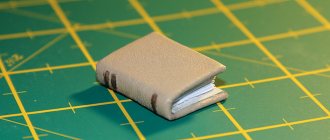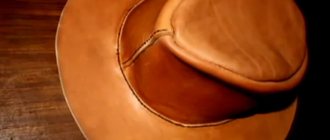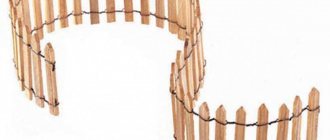Home / Ceiling design / Design solutions / How to make paper stone floors with your own hands?
Marble and simple stone floors look very beautiful and are just as expensive. Not everyone can afford such finishing. Natural marble is not only expensive, but also difficult to work with, which leads to the need to hire specialists and pay for their work, and this will increase the budget to unimaginable proportions. At the same time, there is a way to create a marble-like floor with your own hands and very inexpensively - from paper. Some may think that this is impossible, however, in this article we will try to prove the opposite.
What to cook
Since you have to create stone floors with your own hands from paper, you should purchase it first. The ideal option would be kraft paper - a common packaging material sold in rolls. It is very durable, perfect for the chosen type of finish and is very inexpensive - such a coating will not break your budget.
The marble texture will be created simply: you need to crumple the paper parts, and then cover them with a stain of a suitable color, which you will also have to purchase. In addition to the structure of the floor, a protective layer of varnish must also be created. It can be different - parquet, polyurethane, epoxy and so on. The most durable option is epoxy resin, but it is quite expensive and a polyurethane coating would be a compromise.
In addition to all of the above, you will need several containers for glue, stain and varnish, as well as the tools with which they will be applied. Glue is purchased based on the entire surface, and varnish must be purchased with a reserve - you will need to make three, or better yet, four layers to make the surface strong enough. Since our paper floor is essentially an imitation of stone, you need to buy stain in a shade that matches the natural material.
Required tools and materials
Only paper wallpaper without decorative elements on the surface is suitable for covering the floor. Non-woven or vinyl materials are not recommended, as they are airtight and may peel off during use.
Wallpaper patterns are selected based on your own taste and the overall decoration of the room. This can be a traditional imitation of wood or natural stone, as well as any ornaments, including 3D options.
To work you will also need:
- PVA glue;
- putty;
- spatulas - small and wide;
- sandpaper;
- several brushes for applying glue and varnish;
- rubber roller;
- dry rags;
- water based varnish.
Stages of work
In order to avoid mistakes, you will have to plan everything in advance. Each stage of work takes a certain time and some of them will be quite long:
- Preparing the base. This is the most expensive step if required. The plane should be flat and smooth, without significant flaws. You will have to level the base if necessary, which may not be cheap.
- Having prepared the base, you can move on to more creative work - the material must be torn into different-sized fragments, which in their shape will imitate laid stones. Each piece must be crumpled and straightened, creating the desired coating texture.
- Next, you have to create the stone floor itself from paper with your own hands - the material torn into pieces is glued to the surface. Glue is applied to both the base and the glued fragments themselves.
Important: the pieces of coating are applied with a slight overlap, as they will then decrease in size. It is necessary to ensure that the glue does not protrude on the outside of the fragments being laid - the varnish adheres very poorly to the protruding glue.
- The next stage is coating with stain. In each case, everything will be individual, since the process is creative and depends on how bright and textured you want to create the coating. In some cases, you can do without stain at all by covering the surface with polyurethane paint of the desired shade.
- The creation of a protective layer completes all operations. The varnish must be applied in several layers, each thoroughly drying. In terms of time costs, this is the longest stage. However, you can’t rush here - you can easily ruin everything by covering the floor with a new layer of varnish too early.
PVA glue diluted with water is excellent as an adhesive composition. It must be diluted with water in a ratio of 1:1 for concrete bases and 1:2 for wooden ones. It is very important to thoroughly saturate each of the glued fragments with the adhesive composition. If this is not done, the material may subsequently wrinkle and become covered with wrinkles, which are very difficult to eliminate, and sometimes even impossible. When creating a stone floor from paper, you need to pay attention to even such small details - the overall impression of the finish depends on this.
Choosing the right varnish is an important point. Many people make the mistake of buying a glossy composition. It looks great and shines, but only in cases where the surface is initially perfectly smooth. In our case, this will not happen - there are always small flaws on the surface of the ceiling. Therefore, the best choice would be a matte, semi-matte or, as a last resort, semi-gloss varnish. Despite the fact that our paper stone floor itself is very cheap, the protective layer is better made from high-quality varnish, which can be expensive.
What does it look like
In principle, it is impossible to show what you can do. Each decision is different and completely individual. However, several photo examples presented below can give a general idea of this method of finishing the floor and what the result could be.
Vinyl tiles
Designer vinyl tile (LVT) is a type of flooring that is suitable for do-it-yourself projects. With easy installation, you can easily transform your room in a weekend. Like vinyl sheet, tile is durable, affordable and low-maintenance.
Vinyl tiles for DIY projects
Where can I install vinyl tiles?
This type of flooring can be installed on any flat, level surface except stairs, and is commonly used for kitchens, bathrooms, hallways, and playrooms.
Great option for any room
How durable is this type of flooring?
During normal home use, vinyl tiles hold up well against mechanical damage, including foot traffic, children, and fallen objects. Manufacturers of vinyl tiles provide a guarantee for their products from 5 to 10 years.
Option for a children's room
Available Vinyl Tiles Designs
Most vinyl tiles come in 30x30cm square slabs, and you can choose looks like stone tiles, porcelain tiles, engineered wood, classic geometric, checkerboard patterns, and more.
Vinyl boards can come in different colors. A non-staining shade is suitable for the kitchen.
Porcelain tiles
Porcelain tiles - durability and practicality
This material is very similar to ceramic tiles, but is produced using a slightly different technology. At the same time, it resembles natural stone. In the modern world, porcelain stoneware products are popular due to the following advantages:
- The strength of porcelain stoneware is rated 9 out of 10.
- Surfaces can last up to 50 years.
- Does not emit harmful substances when heated or wet.
- Easy to care for.
- Resistant to sunlight and water.
- Does not burn and does not support combustion.
- A wide range of.
The main disadvantage is the high cost, and this applies to prices of both materials and installation work. Polished porcelain tiles are too slippery for use in kitchens and bathrooms. In addition, it is cold, so it needs to be heated. In some cases, it is impossible to cover the floor with such material due to its heavy weight.
Patterns on a wooden floor.
Bold decisions in the interior have always caused delight. Don't be afraid to experiment when updating an old floor. In this painting option, everything depends only on your imagination. Take a look at the photos below, maybe they will inspire you.
Useful short videos from Make-Self.net
How to make paper stone floors with your own hands?
Marble and simple stone floors look very beautiful and are just as expensive. Not everyone can afford such finishing. Natural marble is not only expensive, but also difficult to work with, which leads to the need to hire specialists and pay for their work, and this will increase the budget to unimaginable proportions. At the same time, there is a way to create a marble-like floor with your own hands and very inexpensively - from paper. Some may think that this is impossible, however, in this article we will try to prove the opposite.
Painting with stripes.
This option is more difficult and will take more time, but the result is worth it. Even the oldest floor can be transformed beyond recognition with painting. Take a look at the options we've selected. Don't be afraid to experiment!
Leveling the self-leveling base
Self-leveling floors are a polymer mixture, which is also called self-leveling. But to avoid incidents, many builders use beacons. These can be adjustable beacons on the legs (pins) and ordinary screws. The first one is easy to install and remove, but the screws must be screwed into a pre-hammered anchor in the floor, and then force must be applied to dismantle them. Install beacons at a distance of a meter from each other. Bring them to the level. Focus on these notes. The base cannot be made without beacons, especially in cases where the volumetric layer exceeds 1 cm in thickness.
Comparison of floor coverings
| Type of coverage | Moisture resistance | Heat dissipation | Wear resistance | Life time | Slip resistance |
| Linoleum | 9 | 6 | 7 | 7 | 7 |
| Carpet | 0 | 10 | 3 | 5 | 10 |
| Laminate | 5 | 7 | 6 | 7 | 8 |
| Tile | 10 | 3 | 9 | 9 | 3 |
| Parquet | 5 | 8 | 8 | 9 | 9 |
Cork
Cork flooring - naturalness and warmth
Such flooring materials allow you to create a truly original covering. The products are made from cork tree bark, so they are completely natural and environmentally friendly.
Among the advantages it should be noted:
- Comfort when walking barefoot.
- High level of sound insulation.
- The coating is non-slip and non-marking.
- The cork is well protected from moisture.
- The material is easy to care for.
- Wide range of colors and textures.
Disadvantages include low mechanical strength and short service life. In addition, cork requires subsequent finishing with varnish, so such floors cannot be called budget.











